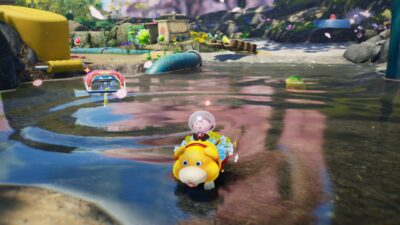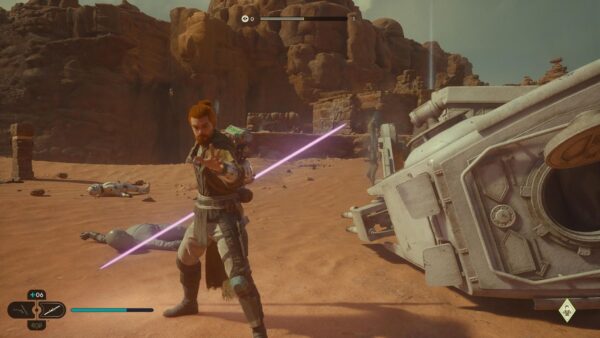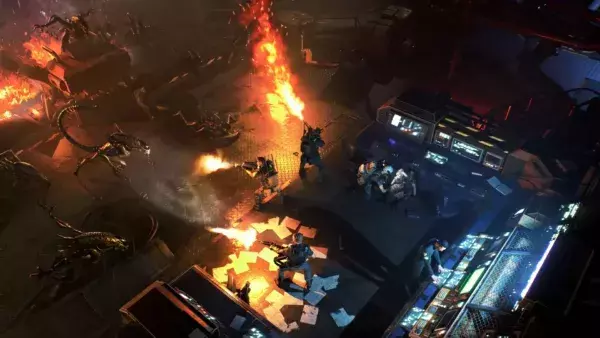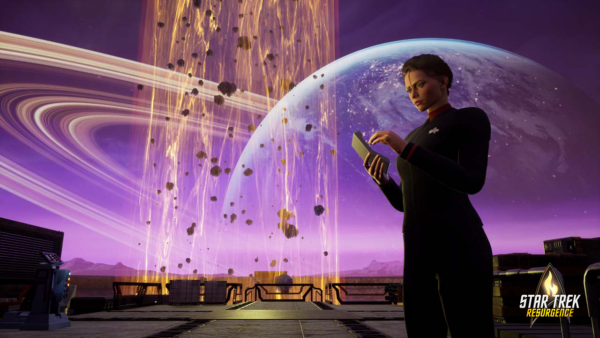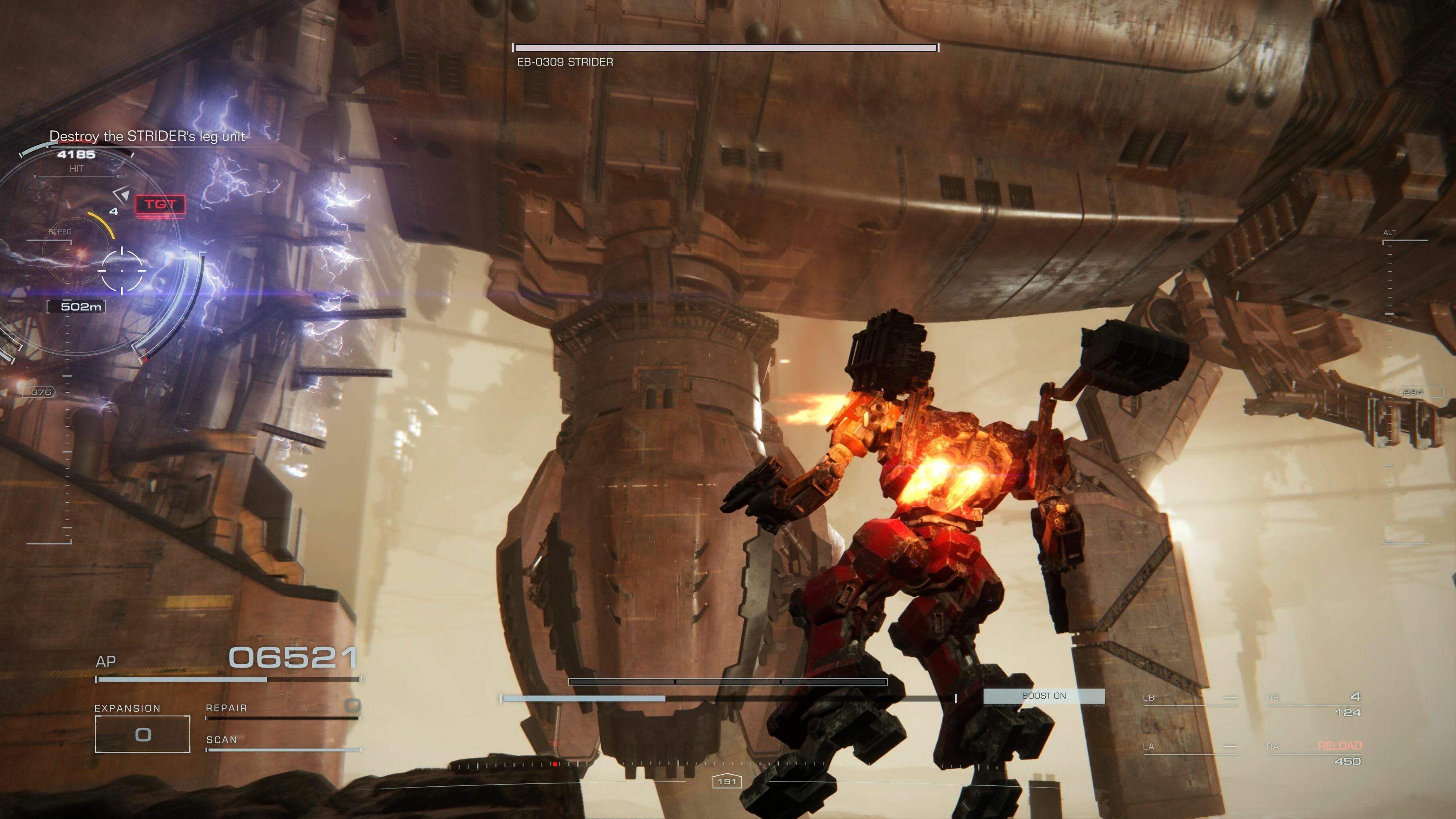
FromSoftware revives a cult mech action series with Armored Core VI: Fires of Rubicon – and the results are explosive. Our review:
That a developer as revered and accomplished as FromSoftware would return to a series as cult (admit it) as Armored Core is one thing. That it would do such a good job applying the lessons learned from perfecting third-person action RPGs directly into it is another feat entirely, and easily the biggest surprise I experienced while playing Armored Core VI: Fires of Rubicon.
In many ways, this is the studio letting its hair down, returning to an unapologetically schlockier style of B-movie action game, which it’s earned the right to do after forever changing the way games are made. Period. And while Fires of Rubicon doesn’t come anywhere close to reaching the revolutionary heights of the Souls titles, its affection for all things hulking, metal and mechanical is equally as palpable.
Perhaps the first thing to mention is that, despite FromSoftware electing to make this a continuation of its long-running series of mech battlers (and not a reboot), Armored Core VI: Fires of Rubicon requires no knowledge of the prior releases. It’s been 10 years since Verdict Day launched to a so-so reception on the PS3 and Xbox 360, after all, hence why this new instalment presents players with the titular fresh planet (that’s Rubicon) to blast and stomp across.
There’s a lot of pre-existing lore to eat up should you choose to do so, but if you’re a total newbie, just know that there’s a planet-scale war being fought between factions over a precious resource, and your mercenary is caught in the middle.
There’s a strong semblance of a story here trying to break through, then. Problem is, by the time I rolled credits, I found myself struggling to care all that much. It’s strange considering that the game offers multiple mission routes and optional objectives that can slightly change the direction of the narrative – evidenced by there being three different endings.
In between Fires of Rubicon’s 50 or so missions you’re regularly treated to a briefing by your faceless handler, barking orders about the consequences of the actions you’ve just performed as if you’re meant to be invested. I’m sure some longstanding Armored Core fans will be, but without proper personalities to latch onto or memorable figures to identify with, the narrative never quite hits as well as I know FromSoftware intended – at least for me. From a presentation perspective the narrative feels just as cold and mechanical as the machines you control, and this is almost certainly by design.
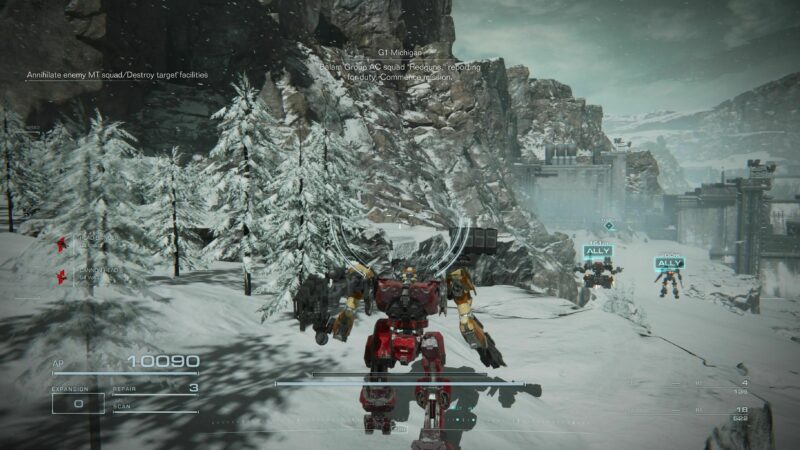
You’ll visit all types of biomes in Armored Core VI’s five chapters, from entrenched snow to windy desert plains. Credit: FromSoftware/Bandai-Namco.
Much more successful and engaging is the action itself, which rather expectedly is where the real meat of Armored Core has and always will lie. Starting off with a fairly simple AC unit at the beginning of the game, you quickly get up to speed with what it means to mow down legions of robot underlings, high-flying choppers, and other rival AC mechs using missiles, rockets, giant swords and the like. Doing so successfully not only means strategically knowing which weapons (mapped to the controller’s four shoulder buttons) to deploy and when as you manage each one’s cooldown, but also crafting your ultimate mech machine back at base ahead of time.
There’s really an unprecedented level of customisation options present in Fires of Rubicon. I could easily see it being every Gundam and mech fan’s wet oil dream. As more of a Power Rangers person myself there were a few times where even I found myself giddy, spending probably a bit more time than I should trying to recreate the colour scheme and look of my favourite Megazord. I could absolutely do it, too. From your four main weapon slots, legs, core, booster pack, head and other components, the idea behind the game is for you to create an AC unit ideal for the next bombastic battle scenario you’ll be plunged into.
Aiding this is the relatively forgiving checkpoint system, which gives you a fair crack at the next tough encounter complete with a full batch of repair kits on restart, rather than forcing you to replay a large portion. In comparison to games like Dark Souls or Bloodborne, Fires of Rubicon’s split up into bite-sized missions that centre on explosive action, ranging anywhere between five and 30 minutes. It’s a refreshing change compared to the long, drawn-out interconnected locations FromSoftware is known for of late. It’s when hitting a checkpoint that you can swap out your current AC unit for any of the premade ones you have stocked up in the hopes of finding victory.
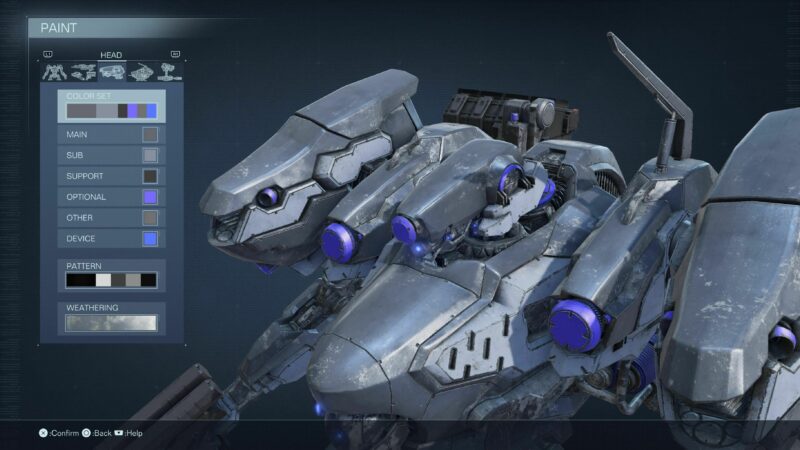
As well as the specific pieces and weapons of your mech, you can also change the colour and surface details. Credit: FromSoftware/Bandai-Namco.
Missions themselves start off a little rote at first, done to lull you into a false sense of security. Because while at first you’ll merely be asked to clear out a base or destroy precious cargo, it’s towards the back half of the game’s first chapter where difficulty ramps up substantially and you’re forced to consider aspects like your machine’s positioning and verticality much more. Environmental factors like this combine with your current loadout, to better force you to think about how to push through tough bottlenecks as you boost about the area.
An early set piece with a ginormous water-powered, multilayered mech called Strider is a good example of where all these considerations must be made at once. As you barrel towards it, dodging beams and destroying smaller units in the attempt of hopping on board, you’re forced to switch up strategies almost immediately. You’ll still be dodging the Strider’s painfully damaging beams, but all the while dotting about its body in the hopes of destroying its weak points.
Sequences like this come up every so often in Fires of Rubicon and are treated as real events. They don’t even need to be something as screen-filling as the Strider set piece, either; many of the heated (and stressful) encounters I experienced were when duking it out with other AC units, all of which come equipped with their own weapon sets, quirks and weaknesses to dodge around. Much like FromSoftware’s more recent fare, bosses put up a real fight and regularly forced me to rethink my approach and loadout.
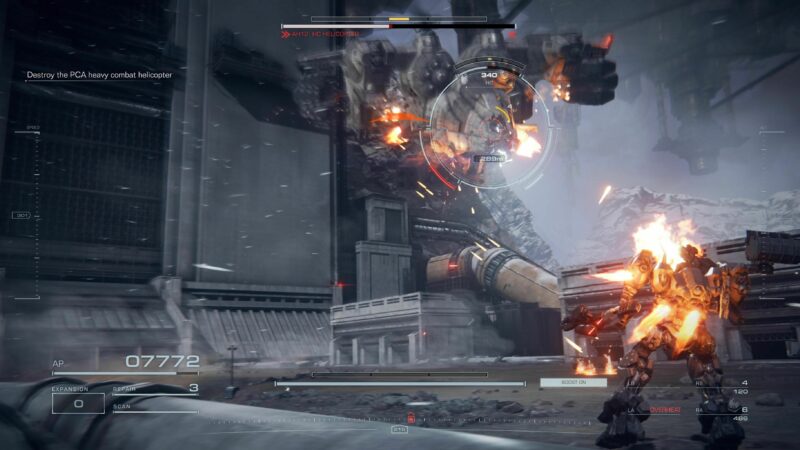
The end tutorial fight is against an attack helicopter, which is much tougher than it has any right to be – in classic FromSoftware fashion. Credit: FromSoftware/Bandai-Namco.
Armored Core VI: Fires of Rubicon is a rambunctious return to form for this once cult classic series. FromSoftware not only proves that it hasn’t lost a step with regards to polish and in-depth combat, but that it can implement these design principles within more than one genre. Fires of Rubicon might be about big mechs battling on a tortured planet, yet it’s hard to imagine the concept being executed much better by anyone else. Narrative shortfalls and unfair difficulty spikes aside, there’s plenty of metal-coated action to love here.
Highlight
The action in most missions sees your mech targeted from multiple angles. That’s why Fires of Rubicon implements a fairly generous lock-on system that can be toggled on and off at any time to target the enemies closest to you. Multiple enemies can be targeted, too, which works well with rocket launcher weapons.
Verdict: 79%
FromSoftware’s return to bombastic and explosive mech action fires on all cylinders, rewarding strategic play just as much as all-out brute force.
Read more: How FromSoftware’s debut King’s Field paved the way for Dark Souls and Elden Ring


